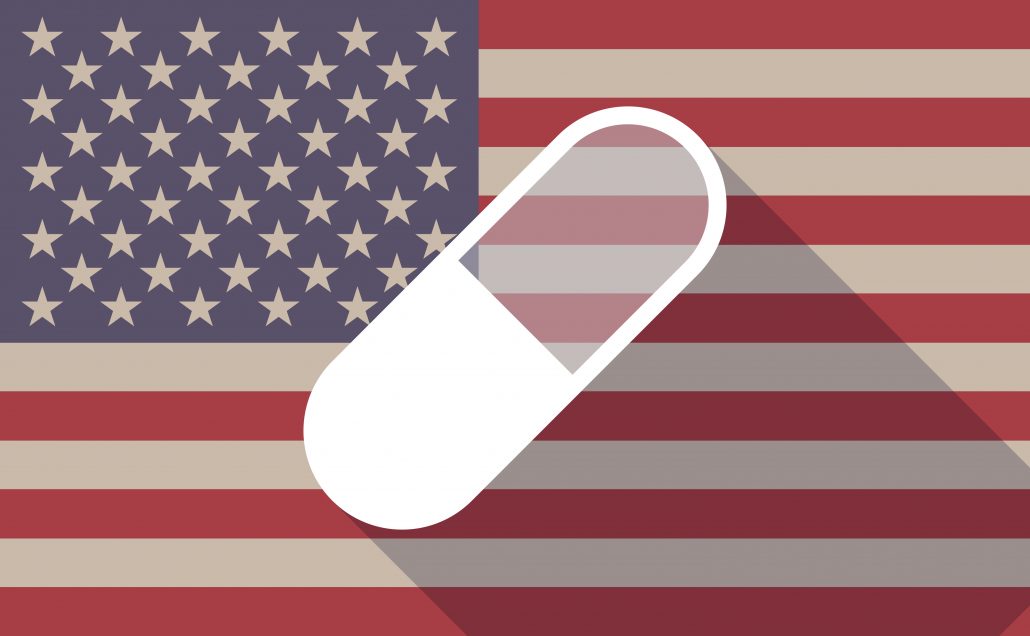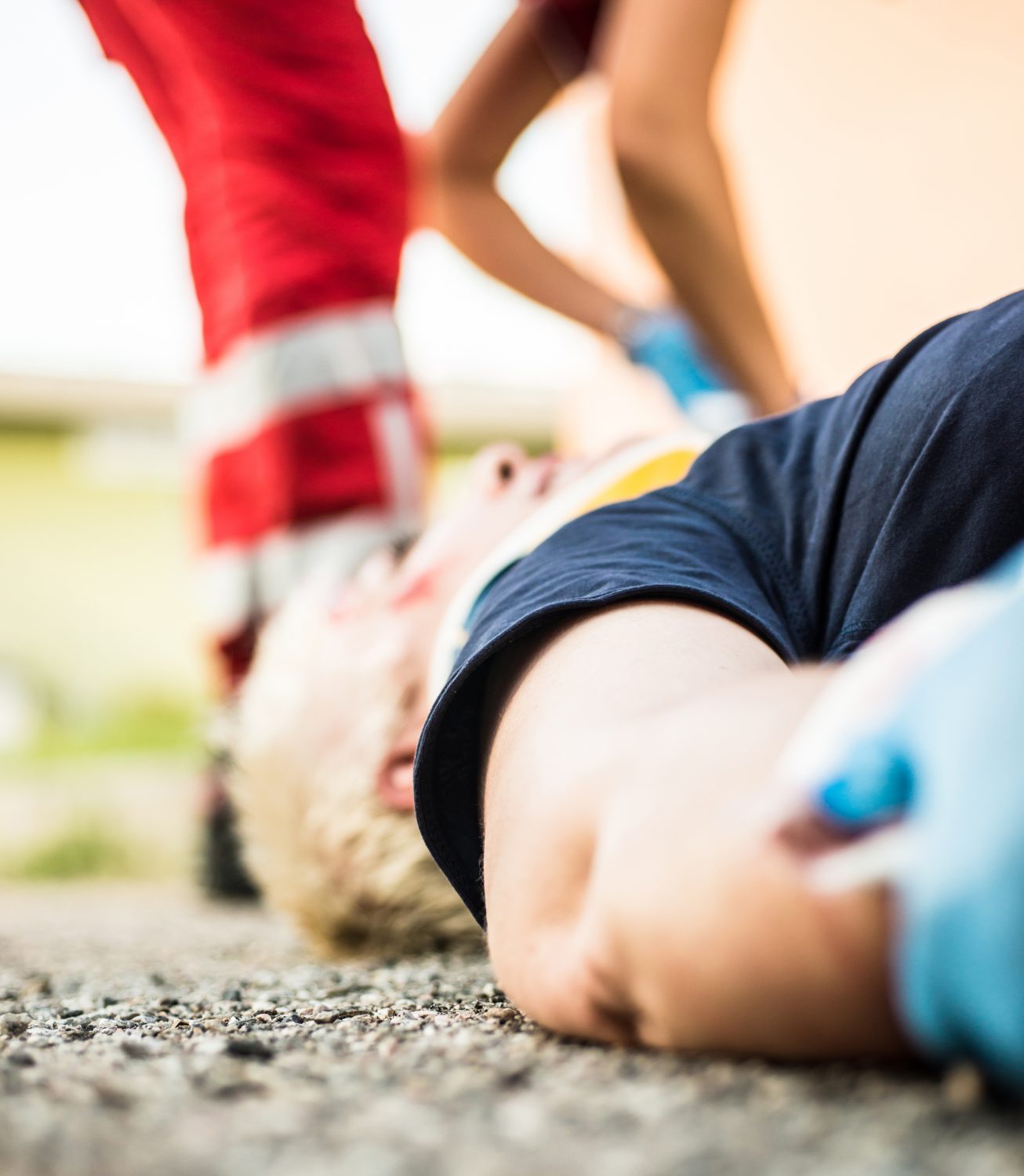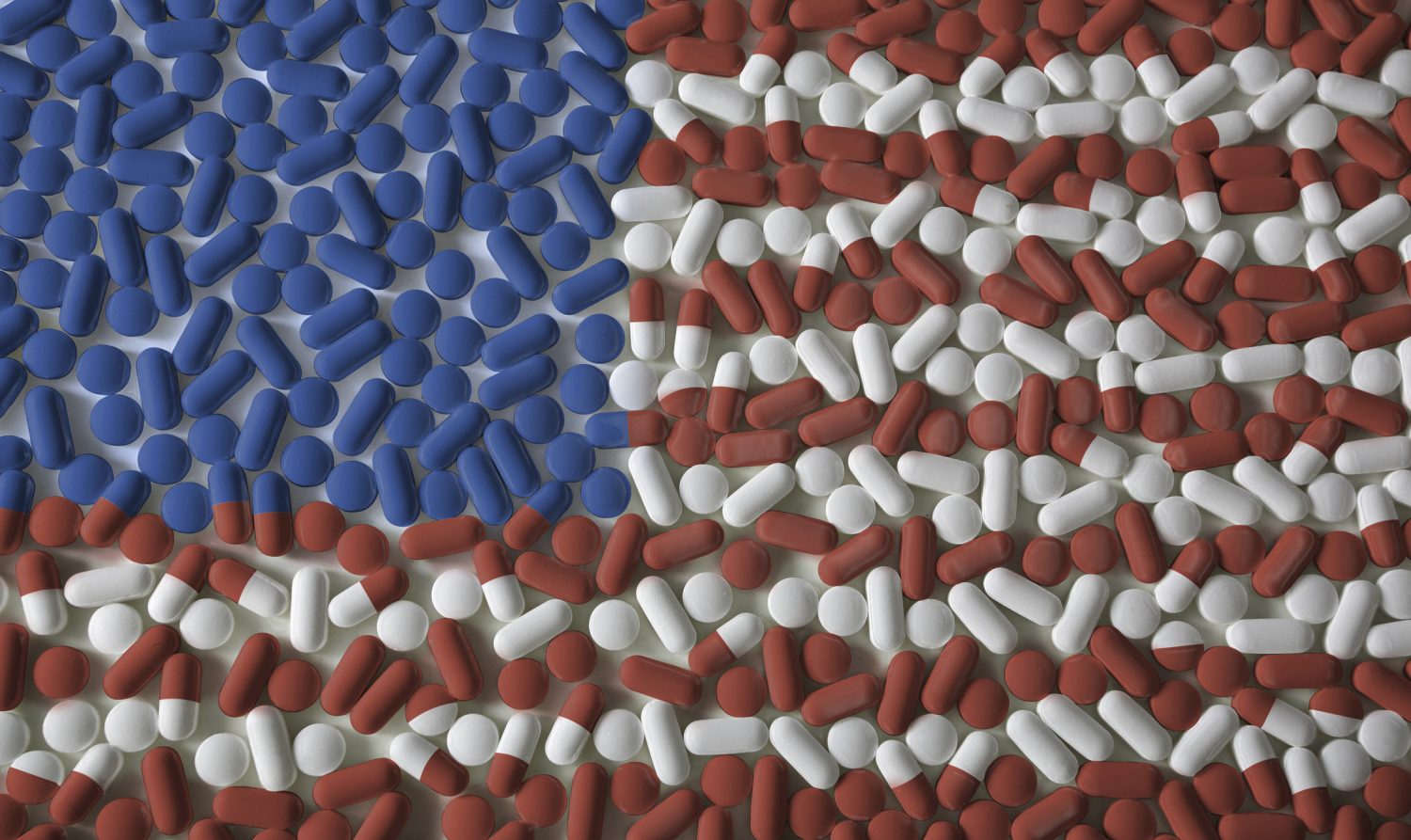by Justin Mckibben | Mar 1, 2018 | Big Pharma, Drug Trafficking, Law Enforcement, News, Opioids, Prescription Drugs

Attorney General Jeff Sessions made an announcement at a news conference Tuesday that the Justice Department will be creating a new task force to pursue the makers and distributors of prescription opioids. It seems that beyond pursuing new restrictions being put on prescriptions, there will be a more intentional focus on Big Pharma and those who many believe have made the opioid crisis possible.
Jeff Sessions said the task force will “examine existing state and local government lawsuits against opioid manufacturers to determine if we can be of assistance.”
Meanwhile, Sessions also included the Justice Department is going to be backing a lawsuit in Ohio against major prescription opioid makers.
Ohio VS Opioid Makers Lawsuit
In truth, this lawsuit isn’t just about the state of Ohio. It consolidates more than 400 complaints by cities, counties and Native American tribes nationwide. Buckeye Nation has definitely been hit hard by the opioid crisis, but for now, the stage is set here for a massive effort against questionable practices from opioid makers.
The lawsuit that solicits the Justice Departments attention is pending in Federal District Court in Cleveland. It goes after various companies for using misleading marketing to promote prescription opioids, including:
- Manufacturers
- Distributors
- Dispensers
The lawsuit also accuses the defendants of:
- Downplaying the risk of addiction to these drugs
- Failing to report suspicious orders by consumers, which would indicate the drugs were being abused
Furthermore, there are some big names in Big Pharma being listed as defendants, including:
- Johnson & Johnson
- Purdue Pharma
- Teva Pharmaceuticals
The suit is also going after large distributors, such as:
Not to mention pharmacy chains like:
So how will the Justice Department be engaging in the current lawsuit? How will this new development impact the outcome of the case?
For more important information on the dangers of prescription drugs, download our
FREE E-BOOK “Big Secrets of Big Pharma: Why They Secretly Hope You Get Hooked”
DOWNLOAD FREE E-BOOK
Statement of Interest Against Opioid Makers
During the press briefing, Sessions explained that the Justice Department plans to file what is called a “statement of interest” in the Ohio lawsuit. This is a technique that past administrations typically would only resort to in cases that directly affect the federal government’s interests, such as diplomacy and national security.
However, with the intensity of the opioid crisis being what it is, it is perfectly understandable to make it such a high priority for the current administration to get involved with. So far, recovery advocates have been largely unimpressed with the half-measures that have been presented thus far with the Trump administration to address the issue.
By invoking the statement of interest, the attorney general is legally able to argue on behalf of the government’s interest in any court in the country. However, it does not make the government a plaintiff. All things considered, Sessions said his department will use criminal and civil penalties. He states,
“We will use whatever tools we have to hold people accountable for breaking our laws.”
Which is quite a statement, considering it isn’t at all common for criminal charges to be brought against Big Pharma.
The Devil Is in the Data
What brought the Justice Department into this began with a discussion on access to certain data. This past Monday, lawyers for the Drug Enforcement Administration (DEA) came to the Ohio courtroom to discuss how much data they would share about the national distribution of painkillers.
The DEA said it would only provide two years of information in the case, asserting that the agency did not want to compromise ongoing criminal investigations. However, Judge Dan Aaron Polster’s request is to provide the sides with nine years of data. He said the agency has until next Monday to decide whether it will comply. This data can assist in determining:
- The number of pills distributed
- The locations
- The distributors
This information could be crucial in allocating liability.
Richard Fields, a lawyer who represents state attorneys general and sovereign Native American nations in opioid litigation, predicts that the statement of interest from the Justice Department “will help unlock this data so that we can hold manufacturers, distributors and pharmacies accountable for flooding communities with pills.”
Therefore, it appears Sessions is going to be taking some big steps toward calling out Big Pharma for their involvement in the opioid crisis. Sessions says the government will be taking a hard look at doctors who overprescribe prescription painkillers. Even legal drugs like these too often lead to addiction and abuse of illegal drugs like heroin.
Ohio Attorney General Mike DeWine says he believes this is a game changer. With all the suffering communities in Ohio have seen over the past several years, we can only hope.
Holding Big Pharma accountable is a huge step. Nevertheless, we should also highlight the need for state and community officials to promote safe and effective addiction treatment. Innovative and holistic recovery programs can make a dramatic difference in helping heal communities. If you or someone you love is struggling, please call toll-free now.
CALL NOW 1-888-922-5398
by Justin Mckibben | Oct 17, 2017 | Drug Policy, News, Opioids, Prescription Drugs, Recovery, Stigma

Back in August, the Commission on Combating Drug Addiction and the Opioid Crisis began urging President Trump to declare a national public health emergency to combat the opioid crisis that has crippled countless communities around America. While the President did soon enough say that he believed the opioid epidemic was indeed a national emergency, the actual official process has yet to begin. However, just this week news broke that President Trump will soon formally declare the “national emergency” status of the opioid crisis.
Reports indicate President Trump plans to make the official declaration next week. It seems appropriate following the explosive exposé following the story on ’60 Minutes’ of former DEA agent Joe Rannazzisi pointing a finger at Big Pharma companies, Congress, and lobbyists for fueling the opioid epidemic.
In fact, Republican Representative Tom Marino, who was the top pick for the Trump administrations Drug Czar, was name-dropped in a less than flattering light in the ’60 Minutes’ piece. Reports today now show Marino has withdrawn from consideration following the story.
So what does this newest revelation mean for combatting the opioid crisis?
Raising Awareness
One of the initial reasons for declaring a national emergency is pretty straight-forward; raising awareness. Not that we don’t see enough shocking news stories or warnings from local officials being issued in various states, but more attention on the issue will help channel more resources into actually helping address it.
As the commission states in their report:
“It would also awaken every American to this simple fact: if this scourge has not found you or your family yet, without bold action by everyone, it soon will,”
“You, Mr. President, are the only person who can bring this type of intensity to the emergency, and we believe you have the will to do so and to do so immediately.”
When the President of the United States says something is a priority, people take notice. Regardless of whether people always agree on politics, when we can all get behind a major issue and put effort into a more inclusive conversation, there is a better chance more can be done.
Overcoming Addiction Stigma
One of the most important aspects of fighting addiction is overcoming the addiction stigma itself. Many people who are suffering do not get the help they need because they are afraid of the stereotypes associated with drug abuse. A lot of people still doubt what the majority of the medical and scientific communities have adopted as fact; that addiction is a health issue, not a moral failing.
By declaring the opioid crisis a national emergency, President Trump has an opportunity to promote education along with public awareness. The more we can help people to understand how addiction affects the mind and body, the better odds we have of supporting those struggling with compassionate and effective treatment options.
Funding for Fighting Opioids
Perhaps one of the biggest hopes for many addiction recovery advocates is that by President Trump declaring the opioid crisis a national emergency he will influence lawmakers to allocate more funding to resources combatting addiction.
A federal declaration would also allow the government to pull funding from other areas as well, such as funding used for the Public Health Emergency Fund, or even the federal Disaster Relief Fund. So while America has been struck pretty hard by hurricanes and natural disasters, some of this same funding may end up going toward creating addiction resources.
One thing many are hoping is that these new funds will also go to promoting more addiction treatment options across the country. Some states may pursue incentives for performance-based enhanced care management (ECM) program, like one recently implemented in New Jersey. Others may put those resources into prevention and education initiatives.
One thing should seem pretty clear; treatment options should be a priority. We already know we cannot arrest our way out of this problem. The War on Drugs did not work, and many do not expect it will now either. With President Trump declaring the national emergency, hopefully, the new effort will go into protecting mental health and substance abuse parity with healthcare and insurance providers. If we have more ways to help those already desperately in need, we could see a better chance for a way out.
With the CDC stating an estimated 91 Americans dying every single day from opioid-related death, which many experts believe is grossly underreported, helping more people fighting opioid addiction find a way out is crucial. However, we should not wait on politicians, health officials or anyone else to fix it. Recovery takes action. If you or someone you love is struggling, please call toll-free now. We want to help.
CALL NOW 1-888-922-5398
by Justin Mckibben | Aug 7, 2017 | Heroin, Methadone, Naloxone, Narcan, Opioids, Prescription Drugs

Narcan is a brand name for the opioid overdose antidote Naloxone hydrochloride. Technically speaking, the opioid antagonist is a synthetic congener of Oxymorphone that is structurally different in that the methyl group on the nitrogen atom is replaced by an allyl group. In the past couple years Narcan has gradually become a household name. With the opioid epidemic in America continuing to ravage many communities across the nation, Narcan has become one of the first lines of defense. For some people, while they know now what this powerful substance is, they are still unsure how to use Narcan to stop an opioid overdose.
NOTE: All instructions in this article come from the Harm Reduction Coalition website. You can also look for Narcan/Naloxone training in your area. Different brands may provide more specific instructions. Be sure to real labels and warnings on Narcan or Naloxone kits.
How to Use Narcan: More about Narcan
Narcan works by blocking the effects of opioids and can actually reverse an overdose in order to get medical attention to someone who is in need. The life-saving opiate antidote is used for the complete or partial reversal of opioid depression, including respiratory depression. An opioid overdose can cause breathing to slow down or stop completely, putting someone’s life in immediate danger. Some examples of opioid overdoses Narcan may be used to reverse include the drugs:
- Heroin
- Morphine
- Codeine
- Oxycodone
- Methadone
- Vicodin
One major plus is that Narcan has no euphoric effects and cannot get someone “high” so abuse is not an issue. The overdose antidote is essentially harmless if there are no opiods present in someone’s system. If given to a person who has not taken opioids, there will be no effect. Narcan can still be effective when alcohol or other drugs are present with opiates. However, some of the incredibly potent synthetic drugs such as Fentanyl and carfentanil have shown to be somewhat resistant to Narcan treatment, meaning those overdosing due to carfentanil require extra doses to be stabilized.
Administration to opioid-dependent individuals may cause symptoms of opioid withdrawal, including:
- Restlessness
- Agitation
- Nausea
- Vomiting
- Fast heart rate
- Sweating
There are other measures that can be taken to help ease these symptoms as well.
How to Use Narcan: Intravenous Infusion
The most rapid onset of action is achieved by intravenous administration, which is recommended in emergency situations. Narcan may be diluted for intravenous infusion in either:
- Normal saline
- 5% dextrose solutions
2 mg of Narcan mixed in 500 mL of either solution provides a concentration of 0.004 mg/mL. Narcan should not be mixed with preparations containing:
- Bisulfite
- Metabisulfite
- Long-chain or high molecular weight anions
- Any solution having an alkaline pH
No drug or chemical agent should be added to the mixture unless its effect on the chemical and physical stability of the solution has first been established. To use the injectable Narcan:
- If the person is not breathing perform rescue breathing for a few quick breaths.
- Use a long needle (called an IM or intramuscular needle) which about 1 – 1 ½ inch. NOTE: If there isn’t a big needle, a smaller needle is OK and inject under the skin, but big needles are better.
- Remove the pop off orange top from the vial
- Draw up 1cc (1cc=1mL=100u) of antidote into the syringe
- Inject into a muscle, the best being thighs, upper, outer quadrant of the butt, or shoulder. NOTE: Inject straight in to make sure to hit the muscle.
- After injection, continue rescue breathing 2-3 minutes.
- If there is no change in 2-3 minutes, administer another dose and continue to breathe for them.
NOTE: If the second dose of naloxone does not revive them, something else may be wrong— either it has been too long and the heart has already stopped, there are no opioids in their system, or the opioids are unusually strong and require more naloxone (such as Fentanyl or carfentanil).
For more information, you should be able to find instructions in the Narcan kit, or inquire when picking up a Narcan kit about any opportunities to receive more in-depth training.
How to Use Narcan: Nasal Spray
Another resource that has helped make huge progress in fighting opioid overdose death rates is the Narcan (or Naloxone) nasal spray kit. The variation has made training people to administer the overdose antidote much easier and much less dangerous. Without needles, the nasal spray system helps eliminate the issue of blood contamination.
According to instructions posted through the Harm Reduction Coalition, there are about 5 steps for how to use Narcan with nasal spray.
- If the individual is not breathing perform rescue breathing for a few quick breaths.
- Attach the nasal atomizer (applicator) to the needleless syringe and assemble the glass cartridge of naloxone.
- Tilt the head back and spray half of the naloxone up one side of the nose (1cc) and half up the other side of the nose (1cc).
- If there is no breathing or breathing continues to be shallow, continue to perform rescue breathing for them while waiting for the naloxone to take effect.
- If after about 3 to 5 minutes there is no change, administer another dose of naloxone and continue to breathe for them.
NOTE: If the second dose of naloxone does not revive them, something else is wrong—either it has been too long and the heart has already stopped, there are no opioids in their system, or the opioids are unusually strong and require more naloxone (such as Fentanyl or carfentanil).
Regardless of if you use an intravenous Narcan kit or a nasal spray kit, Narcan should never be used as substitute for emergency medical care. In the event of an opioid overdose one should always call 911 right away, even if the individual wakes up. Narcan can wear off between 30-90 minutes, while the effects of the opioids can last much longer. It is possible that after Narcan wears off the overdose can return.
Also look into Narcan training programs in your area.
How to Use Narcan: Get More Help
When someone has to be revived from an opioid overdose it can be a pretty clear cut indication that something needs to be done in order to help them stay safe.
Another difficult aspect of how to use Narcan is that naloxone can cause uncomfortable opioid withdrawals. Because Narcan blocks the action of opioids in the brain, people can wake up feeling withdrawals practically immediately and try to use again. Of course this could result in another overdose.
Beyond administering Narcan to save someone’s life, take this as an opportunity to seek resources and start a conversation about getting them the help they need. Preserving life is important, but saving a life by changing a life can make a world of difference. There are empowering and innovative addiction treatment programs that specialize in addressing this chronic, progressive and fatal substance use disorder. After surviving an overdose presenting someone with the opportunity to get treatment may be the best chance they get.
Holistic addiction treatment allows people who were once hopeless build the foundation of hope again. If you or someone you love is struggling with substance abuse or addiction, please call Palm Healthcare Company. We want to help.
CALL NOW 1-888-922-5398
by Justin Mckibben | Aug 2, 2017 | Addiction, Drug Abuse, Heroin, Opana, Opioids, Prescription Drugs

America knows all too well the devastation of opioid addiction. With an overdose outbreak that has been progressively damaging and related death rates becoming increasingly alarming, we have reached new depths of drug-induced desperation. Therefore, the news from the Commission on Combating Drug Addiction and the Opioid Crisis is not all that shocking. The panel charged with examining the nation’s opioid epidemic is now urging the President to declare a national public health emergency to combat the ongoing crisis.
When we look at the history of American presidents announcing a ‘state of emergency’ it typically has to do with national security, foreign policy and war, or natural disasters and viral illness. So, to put the issue of addiction up next to these drastic calls to action might just bring a new level of intensity to battling opioid addiction in America.
American overdose deaths involving opioids have quadrupled since 1999. From 2000 to 2015, more than 500,000 people died of drug overdoses. The majority of these overdose deaths have opioids involved.
In America, drug overdoses now kill more people than gun homicides and car crashes combined.
Opioid Commission Calls for Action
The Republican New Jersey Governor Chris Christie was enlisted as the chair of the opioid commission back in March. The opioid commission also includes:
- Democrat Governor Roy Cooper of North Carolina
- Former Democratic Representative Patrick Kennedy of Rhode Island
- Republican Governor Charlie Baker of Massachusetts
At the time the commission was created Chris Christie said the idea behind the administration’s new approach to fighting addiction would focus a lot on assisting the Center for Disease Control and Prevention (CDC). This week the opioid commission’s statement calling for the President’s immediate action states:
“Our citizens are dying. We must act boldly to stop it. The first and most urgent recommendation of this Commission is direct and completely within your control. Declare a national emergency.”
While insisting that the administration put forth an emergency declaration, the specially appointed opioid commission said that Trump is the-
“-only person who can bring this type of intensity to the emergency and we believe you have the will to do so and to do so immediately.”
The opioid commission was deliberate in the details, acknowledging that with 142 Americans dying every day from drug overdoses-
“America is enduring a death toll equal to September 11th every three weeks.”
When you think about it in this context, the statistics become even more startling and horrifying. The fact that so many men, women and even children in America are losing their lives to drugs like heroin and prescription pain medication. The opioid commission went on to say:
“Your declaration would empower your cabinet to take bold steps and would force Congress to focus on funding and empowering the Executive Branch even further to deal with this loss of life,”
“It would also awaken every American to this simple fact: If this scourge has not found you or your family yet, without bold action by everyone, it soon will.”
In the last few months there has been some waves of criticism against the opioid commission after missing two deadlines to release this report in June and July. Now that the report is finally here, what can be done to address the concerns the opioid commission brings with it?
Will the White House Take Action?
According to initial reports the White House intends to “immediately” review the recommendations of the opioid commission. In the statement from the White House:
“The opioid crisis is a tragedy that has been harming America’s communities for far too long. We appreciate the Commission’s hard work on this important interim report. We will immediately begin reviewing its recommendations, and eagerly await its final report.”
The final report from the opioid commission is expected to be submitted during October. Still, many are hoping the Trump administration does not wait that long to start planning for a response.
The opioid commission made many recommendations in the interim report for efforts to curb the opioid epidemic and the increasingly high death rates. Those recommendations include:
- Rapidly increase treatment capacity for those who need substance abuse help
- Establish and fund better access to medication-assisted treatment programs
- Make sure that health care providers are aware of the potential for misuse and abuse of prescription opioids by enhancing prevention efforts at medical and dental schools
- Equipping all law enforcement in the United States with naloxone to save lives
Naloxone is the opioid overdose antidote used by first responders to save people overdose victims. So far access to Naloxone and Narcan, the name brand, has expanded, but many think not nearly enough.
With the fight for healthcare in Congress seeming to hit every rough patch possible on the road to settling on legislation, people are already worried about how coverage may or may not change for tens of millions of Americans. So the concern for how to face a growing addiction problem while simultaneously afflicted with a potential healthcare crisis is very real for a lot of people.
Time will tell if the Trump administration acts on the suggestion to declare a state of emergency to call more action toward the opioid epidemic. And if they do declare it, what will change?
Palm Healthcare Company Offering Holistic Health
While Palm Healthcare Company is not qualified to fix all the problems in politics, we do believe in providing quality care to as many men and women struggling as possible. Palm Healthcare Company facilities create a safe, comfortable and effective environment to experience powerful and life-changing courses and treatments focused on holistic health.
While the opioid epidemic may not be an easy issue to solve, Palm Healthcare Company believes in helping those who have suffered from addiction to opioids and/or other drugs find a new way and a second chance. With medical detox, personalized inpatient and outpatient treatment options and aftercare opportunities such as Recovery Coaching, Palm Healthcare Company wants to support every part of your journey.
Overcoming the opioid epidemic means helping those who have suffered heal.
Drug abuse and addiction is a devastating and deadly disease, and providing effective and compassionate treatment makes a lifelong difference. If you or someone you love is struggling with substance abuse or addiction, think about who you want to be working with to find a real solution. Please call toll-free now.
CALL NOW 1-888-922-5398





